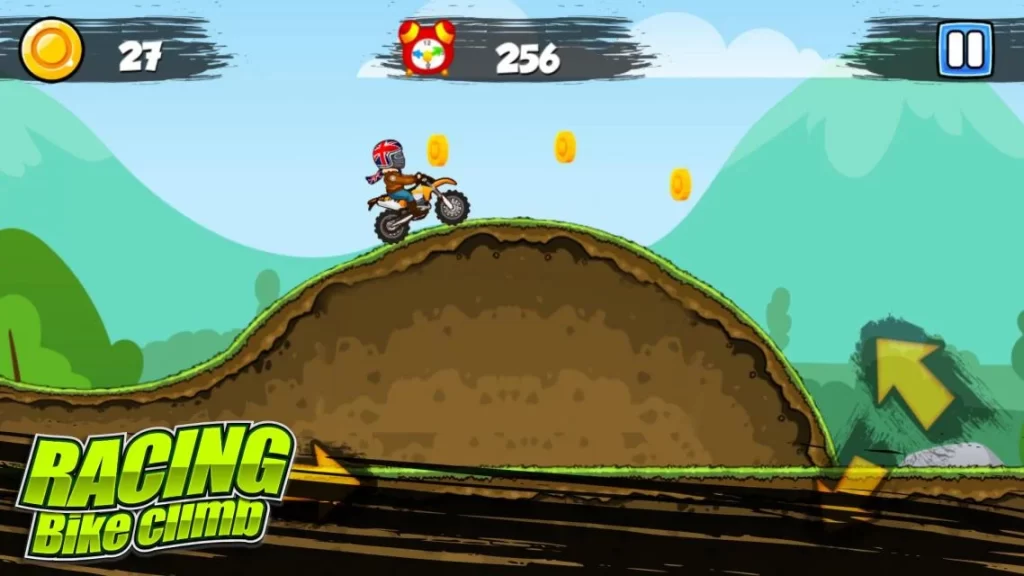Whether you ride a road bike or a mountain bike, hills are an inevitable part of cycling. It is often the climbs that decide the outcome of races, so being a good hill climber is essential, regardless of whether you are racing against another rider or the clock.
With the right training and improvement of your technique, you can improve your climbing dramatically.
How to train for shorter climbs
1. Do some hill repeats
Tim de Waele, do some hill repeats, and separate each one into three phases
Divide a hill into three distinct phases if it isn’t too steep. It should start reasonably steep, like 8-10%, flatten slightly in the middle third, then rear up to its steepest, like 10-12%, in the final third. Approximately two to three minutes should be required for the climb.
The hills should be repeated eight times with a landmark at the bottom and one at the top for starting and stopping the computer. When you reach the top, sprint at the top, sit down and change down, and then sprint all the way back down the hill.
Once you are able to breathe normally again, recover from the effort. Attempt to complete all eight repetitions at the same time.
If you fade badly, stop the exercise, warm up, and try again the following week. You should record the time for each climb as well as the weather and wind direction so you can compare them later.

2. Change your pace
Exercises to change pace should be performed on longer hills that are relatively steep.
You should begin the hill at a moderate pace and then select a landmark about 250 metres in front and sprint out of the saddle in pursuit of it. If the distance allows, repeat each hill as many times as you can at a moderate pace.
This is a great way to get an edge on the opposition in a race, as the ‘stop go’ of the pace will disrupt their rhythm and break their morale more quickly than any other tactic.
3. Practise brow sprints
When riders reach the top of a climb, how many of them stop pedaling to freewheel before changing into the big chainring? That was a waste of time! You can practice brow sprints by practicing them. The descent begins as soon as you reach the top of the hill and immediately switch to the big ring.
This is the perfect place to attack in a race because most riders will do this freewheeling lull after a tough climb. Furthermore, others will hesitate to take up the chase, so you can escape.
It’s common to see riders freewheeling over brows during time trials; that’s a loss of valuable seconds. You need to sprint – don’t hesitate! Despite the initial increase in momentum, you’ll still be able to pull away from the others on the descent.
5 technique tips for longer climbs
LeMond (in yellow) climbing in a mountain stage during the 1989 Tour de France AFP/Getty Images
1. Sit down
The most aerobically efficient way to climb is to sit in the saddle as long as possible. Your glutes will be recruited when you sit back in the saddle, which will help you pedal with more power. Standing up on the pedals out of the saddle is more powerful, but it will burn through glycogen stores more quickly.
It’s still necessary to get out of the saddle occasionally to give your bum a break, de-stress, and give your muscles a chance to rest. You should avoid rocking your bike too much when you’re out of the saddle to avoid wasting energy with exaggerated honking.
2. Relax
The act of gripping the bar tightly and tensing your upper body while climbing is a waste of energy and can be exhausting. Let yourself relax! Ensure that your shoulders are back and your back is straight during climbing.
Put your hands on the bar tops while you are climbing. Your diaphragm will open up, improving your aerobic efficiency by making more space for your lungs.
The positioning of your hands on the bar will help you avoid repetitive strain injuries such as ulnar neuropathy. You should place your hands on the hoods when standing on the pedals for the best stability.
3. Keep a steady cadence
It is ideal to maintain a steady cadence of about 90rpm. Make sure you change gears before a gear becomes too difficult for you. Your glycogen reserves will be drained, and your mechanical system will be put under a lot of pressure.
To compensate for your lower cadence and keep your power consistent, change up to a bigger gear before standing on the pedals. When you sit down again, switch back to an easier gear.
Change up a gear if the gradient eases off or a tailwind helps you maintain your pace and power output. You may need to fit easier gears if you are consistently struggling or walking.
4. Pace, don’t race
In order to deliver your best effort on a long climb, you must pace yourself. Most mountainous European events and some major UK sportives have several climbs that can take up to an hour.
Consequently, if you push too hard, too early, you might blow before the top – and even if you don’t, going into oxygen debt and burning through too much muscle glycogen could damage your entire ride.
It’s important to maintain aerobic fitness until you’re ready to give it your all, perhaps in the final few miles.
This threshold figure is typically derived from your maximum heart rate when you’re using a heart rate monitor. When it becomes impossible to hold a normal conversation, back off if you’re riding on perceived exertion alone.
5. Position perfectly in a group
Racers need to position themselves correctly on climbs. You should start every hill at the front if you aren’t a strong climber (before you become one by following the advice above). If you start going backward, you have plenty of wheels to hold onto.
Make sure you stay close to the rear wheel of the rider in front, but not directly on it: this gives you an escape route if the rider brakes or ‘comes back’ at you.
Make sure to tuck into the sheltered lee side of the rider depending on the wind direction. Keep your distance from the wheel and take shelter as much as possible.
Be sure to move up if there’s a lull on the climb, preferably on the protected side of the bunch. Think about how you can save energy by using your head. When you’re a strong climber, use the change of pace I explained or attack on the brow when they sit up!
Enter a hill climb competition
Reuben Bakker-Dyos / Immediate Media If you’re a racer, you know how important hills are Reuben Bakker-Dyos
What better way to test your climbing abilities than to enter a hill climb competition? You’ll be pushed to the limit, whether it’s a mass start or a time trial.
Hill climb competitions are held in Britain as an end-of-season tradition, and the Cycling Time Trials website lists a number of them. Readers in other parts of the world might be able to find a timed hill climb at their local cycling club.
There’s a VC Walcot hill climb near Bath, UK, that BikeRadar attends. The course takes off near Claverton from the A36 (Warminster Road), climbs past the American Museum, and ends near the University of Bath. This steep lane winds up 1km (0.6mi) of narrow tree-covered terrain at an average gradient of 10%.









